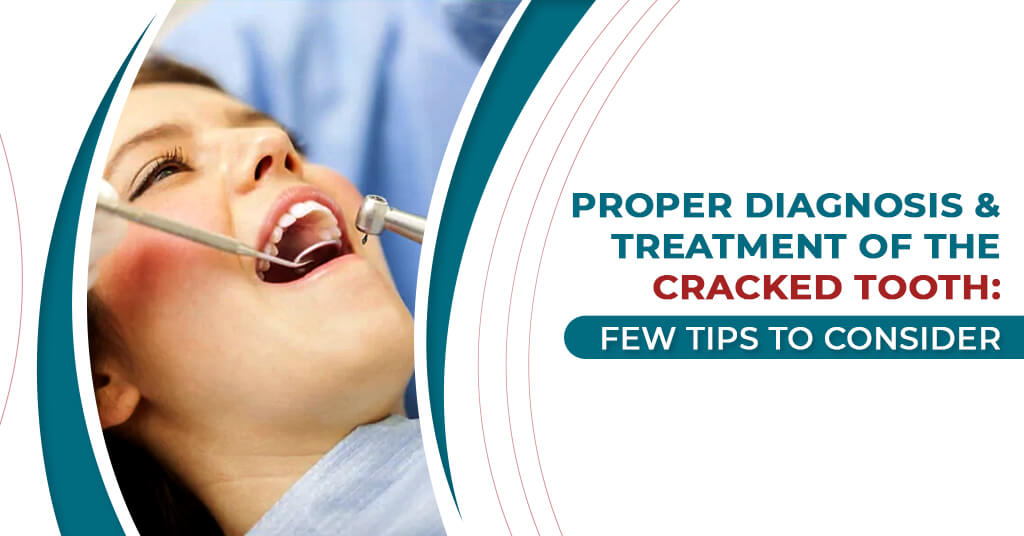Menu

The study titled ‘Don’t Let Your Diagnosis Fall Between the ‘Cracks’’ was originally published by Dentistry Today.
Let us begin by understanding the definition of a cracked tooth. It can be defined as an incomplete fracture that is usually initiated from the crown. It can extend subgingivally or cervically and is directed mesiodistally. The extent and the depth of the crack or fracture are more or less unknown and it can even progress towards the periodontal ligament or the pulp.
So what are the initial symptoms of a cracked tooth? It can easily mimic the symptoms of apical periodontitis, necrosis, and pulpitis, even though there are radiographically and clinically zero signs of caries. At times, the cracked tooth can be minimally restored, and there could be times that it cannot be restored at all. This makes the diagnosis more complex.
This article covers some tips to keep in mind to ensure the correct diagnosis and treatment of the cracked tooth.
The most susceptible teeth to fracture are the Mandibular first and second molars. The maxillary premolars can also be considered susceptible. You will notice that the crack is mostly found under an existing restoration or on the distal or mesial marginal ridge.
It is extremely vital to understand the extent of the crack. For instance, a craze line cannot extend past the enamel since it is a small crack. Craze lines do not cause biting or temperature sensitivity. However, the patient can experience biting pain and temperature sensitivity if the crack extends to the dentin. The crack can be dealt with by creating a crown only if it does not extend into the root canal space. Depending on the patient’s symptoms, the clinician must come up with a robust treatment protocol.
If the tooth does not have caries, yet has symptoms of necrosis or pulpitis, and if the tooth is minimally restored, the clinician must first suspect the tooth. It can be restored if diagnosed and treated properly. If the tooth has become necrotic, the prognosis drops precipitously. This would also suggest that the crack has been present for a long period.
The patient might find it difficult to pinpoint the affected tooth. The best method to diagnose a cracked tooth is by using a tooth sleuth to test each cusp of a suspected cracked tooth. Another effective technique is cotton roll compression and vitality testing.
To ensure proper management of cracked teeth, early diagnosis and detection are crucial. This can help save many teeth. However, since the nature of the symptoms are vague, and the pain is imminent, there could be delays in treatment. Untreated cracks also serve as an opportunity for bacteria to attack the pulp space. This could infect the pulp or lead to an inflamed pulp.
Treatment will commonly fall into any 1 of these 3 categories:
The treatment will largely depend on the depth of the crack and the pulp status. To determine the extent of the crack, the use of a surgical operating microscope is a must.
A temporary crown for 6 weeks can be advised if the cracked tooth is diagnosed with reversible pulpitis. If the symptoms are resolved after 6-8 weeks, the clinician can proceed with a permanent crown. However, in case the symptoms get worse, root canal therapy must be carried out before placing a permanent crown.
If necrosis or pulpal diagnosis of irreversible pulpitis is noticed on the cracked tooth, then root canal therapy must be initiated before placing the permanent crown. The extraction must be indicated in case the root canal treatment is carried out and the clinician discovers that the crack has extended into the root.
According to a recent study, promising results were discovered while treating a cracked tooth. The crack has extended to the radicular dentin. The clinician placed intra-orifice barriers apically to the apical extent of the crack. The aim was to reinforce cervical dentin and prevent the ingress of bacteria.
Repetitive stress to the dentition can lead to cracked teeth. It can also happen if a vulnerable tooth undergoes sudden stress.
The best way to ensure tooth safety is by suggesting the patient wear a nightguard before heading to sleep, especially if grinding is a habit during sleep.
If a patient has a history of cracked teeth, they should be evaluated for full-coverage restorations on specific teeth that are showing signs of vulnerability. It is quite common for a patient to have a tooth extracted due to a crack, only to show up again in a short period with another crack. This happens because the edentulous space was not restored.
The diagnosis and treatment of the cracked tooth can be difficult at times. Various factors come into play, and they contribute immensely towards the correct diagnosis and treatment. However, by having a proper understanding of cracked teeth, dentists can provide the best treatment possible and save more of these teeth.


| PRODUCTS | QTY | PRICE | VALUE in INR |
|---|
| PRODUCTS | QTY | PRICE | VALUE in INR |
|---|